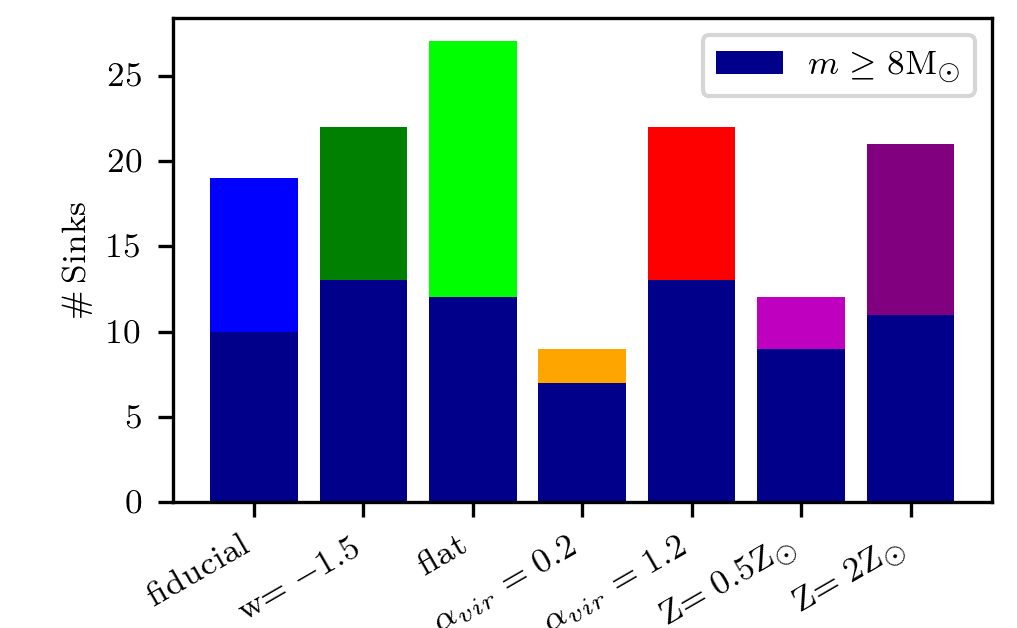Feedback and SFE in Massive Star-Forming Regions
Birka Zimmermann
Star formation, and in particular high-mass star formation, determines the evolution of galaxies. Due to their energetic feedback ((ionzing) radiation, stellar winds, and supernovae), high-mass stars are believed to drive the galactic baryon cycle.
We investigate the formation and initial evolution of massive stars and their host cores up to the point where (ultra-)compact HII regions are established. We perform simulations of the gravitational collapse of isolated, parsec-scale, turbulent cores with the (magneto-)hydrodynamic code FLASH. We include a novel scheme to treat radiation pressure on dust and gas as well as ionizing radiation.
We perform a parameter study, which forms statistically relevant samples to investigate high-mass star formation. The initial cloud core has a mass of 1000 M☉ and a radius of 1 pc. The fiducial run has a plummer like density profile with ρ ∝ r-2, αvir = 0.6 and solar metallicity (Z = Z☉). We vary the initial density profile, virial parameter and metallicity. Sink particles in our simulations represent either single stars, binaries or even higher order systems of stars. We find that the overall star formation efficiency (SFE) is quite independent of the initial cloud core conditions, even if the number of sink particles can change.

